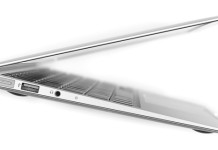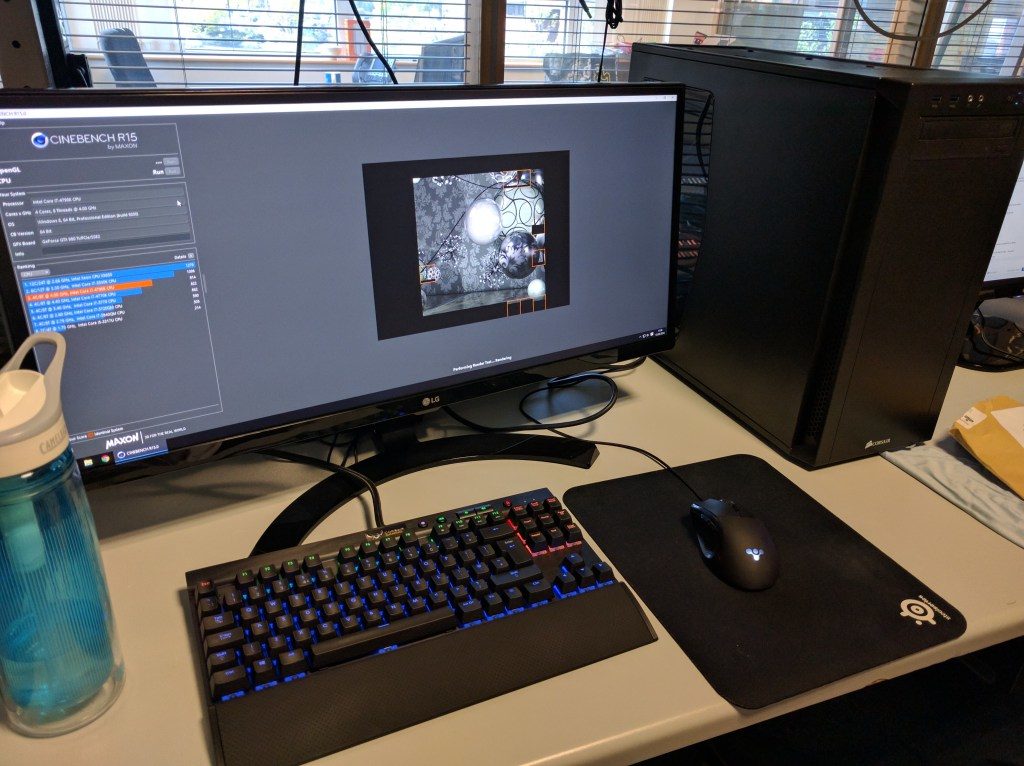8 weeks ago, I challenged my friend Dave to build the fastest gaming PC possible, for £450. A decent gaming rig usually costs over £1000, so this would be a good test of our hardware and overclocking knowledge. Unable to turn down a challenge, he accepted, and we agreed a prize of £50 Steam credit – and the kudos of building the fastest PC.
If you haven’t already read part 1, you can read it here.
BUILD SPECIFICATIONS
| Dave | Nick | |
|---|---|---|
| CPU | Intel i7 4970K | Intel i5 6500 |
| GPU | Asus Strix GTX 980 TI | Gigabyte R9 290 Windforce OC |
| RAM | Corsair Vengeance Pro 16GB DDR3 2400MHz | Kingston Hyper X Predator DDR4 16GB |
| Motherboard | Gigabyte GA-Z97-D3H | Gigabyte Z170 Gaming K3 |
| Disk | Samsung EVO 850 SSD 250GB | SanDisk SSD PLUS 120GB |
| Power supply | Corsair CXM 600W | Corsair GS600 |
| Cooling | Corsair Hydro Series H60 | Cooler master 103 |
| Case | Corsair Carbide Series 200R | Bitfenix Nova |
BENCHMARK RESULTS
| Dave | Nick | |
|---|---|---|
| Firestrike 1.1 Overall | 15866 | 11069 |
| Unigine Valley Score | 4524 | 2835 |
| UserBenchmark Multi core | 703 | 561 |
| UserBenchmark SSD Random 4k (MB/s) | 66.1 | 34.6 |
| UserBenchmark RAM Multi core (GB/s) | 29.5 | 31.7 |
| Cinebench CPU | 915 | Nick “lost” his scores |
| Cinebench GPU | 143.11 | N/A |
THE GRAPHS
Firestrike is a GPU-intensive 3D demo by 3D Mark, designed to strain even the most powerful GPUs. Not only did my 980 TI outperform the R9 by around 30%, Nvidia’s PhysX rendered every particle beautifully and gave everyone watching an impressive visual display.

Unigine Valley is another well-known GPU-intensive 3D demo, and no surprises, the 980 TI beat the R9 again, this time 37% faster.

GPU performance aside, how did the other components compare? Userbenchmark showed that the i7 was 20% faster than the i5. The Skylake i5 really gave they aging i7 a run for it’s money.

The SSD scores were a bit of surprise. The technical specs of the SSDs were very similar, and in standard read/write operations, performed as expected – and were in fact quite closely matched. However, the more expensive Samsung EVO 850 was almost twice as fast at random reads across the drive.

Finally, we compared RAM throughput. Each of our CPUs and motherboards were overclocked (Mine more-so than Daves setup), and while we expected the DDR4 RAM to outperform the DDR3 RAM, we hadn’t expected the results to be so close. The DDR4 RAM was 0.9GB/s faster than the DDR3 equivalent.
COSTS
| Dave | Cost | |
|---|---|---|
| CPU | Intel i7 4970K | £204 |
| GPU | Asus Strix GTX 980 TI | £587 |
| RAM | Corsair Vengeance Pro 16GB DDR3 2400MHz | £52 |
| Motherboard | Gigabyte GA-Z97-D3H | £43 |
| Disk | Samsung EVO 850 SSD 250GB | £60 |
| Power supply | Corsair CXM 600W | £50 |
| Cooling | Corsair Hydro Series H60 | £59 |
| Case | Corsair Carbide Series 200R | £52 |
| Total cost | £1107 |
| Nick | Cost | |
|---|---|---|
| CPU | Intel i5 6500K | £139 |
| GPU | Gigabyte R9 290 Windforce OC | £150 |
| RAM | Kingston Hyper X Predator DDR4 16GB | £66* |
| Motherboard | Gigabyte Z170 Gaming K3 | £75 |
| Disk | SanDisk SSD PLUS 120GB | £32 |
| Power supply | Corsair GS600 | £22 |
| Cooling | Cooler master 103 | £19 |
| Case | Bitfenix Nova | £26 |
| Total cost | £533 |
* The supplier mistakenly dispatched 16GB, rather than 8GB, so Nick’s RAM actually cost £33 for 16GB.
CONCLUSION
£533 vs £1107. No contest. Dave’s GTX 980 TI was more expensive than the rest of the components combined! Remove the GPUs from the equation, £383 vs £520 – a 30% difference, and the i5 setup narrowly wins on a performance/£ basis (by about a 5% margin). My final build doesn’t “look” budget, and these results certainly aren’t budget either. The cheap case, cooler master, and budget PSU were all solid choices, and the benchmarks show the i5 is still a very capable processor. Dave’s PC, sans GPU, is a slightly higher-spec budget PC. The large 200R case, modular PSU and over-the-top watercooler were bought specifically with future upgradability in mind (after he splurged on the GPU, and blown his chances of winning – so he didn’t feel so bad).

















